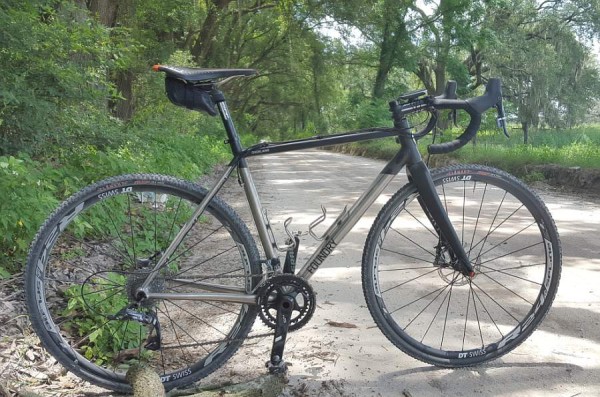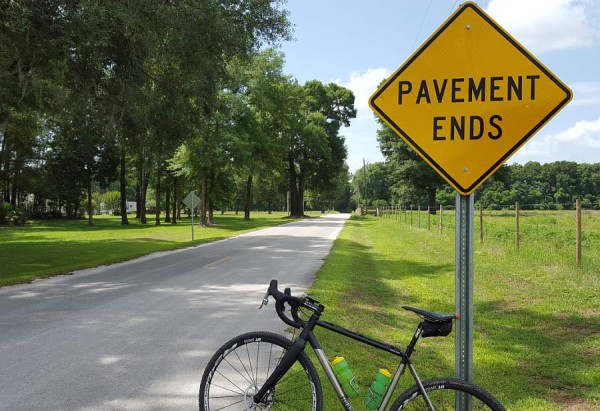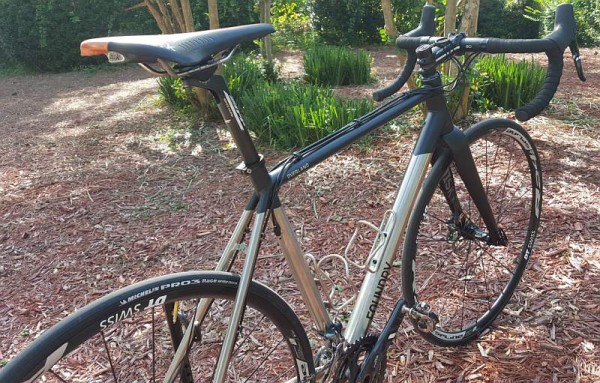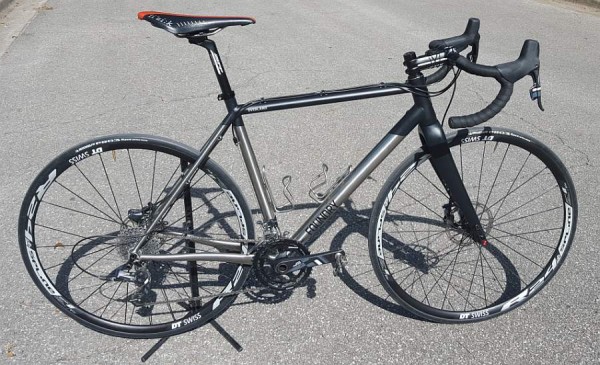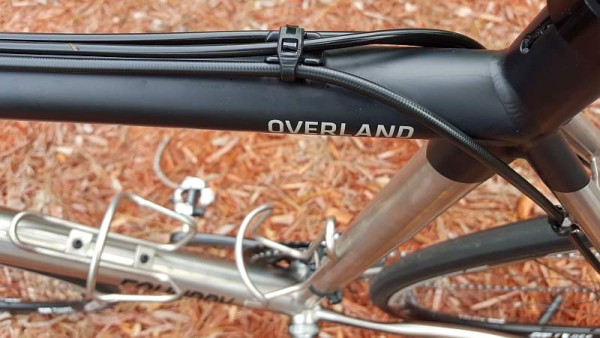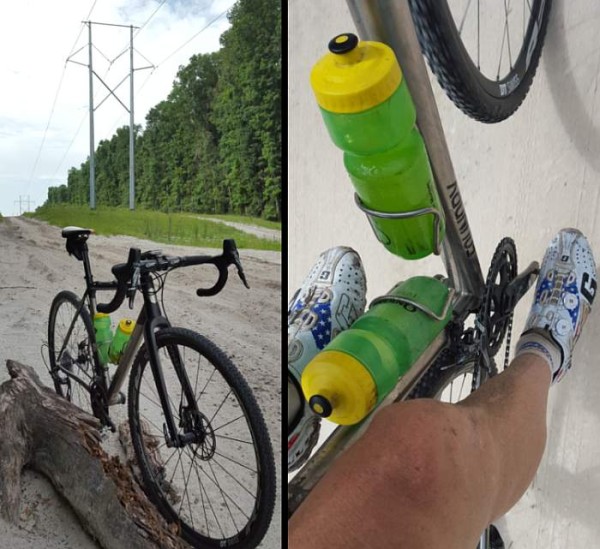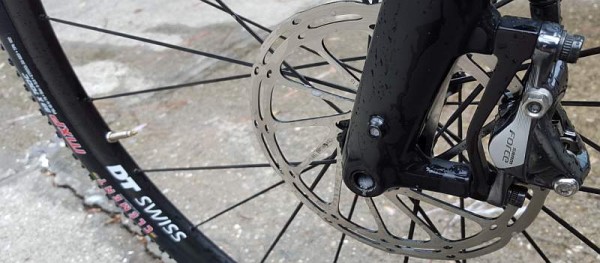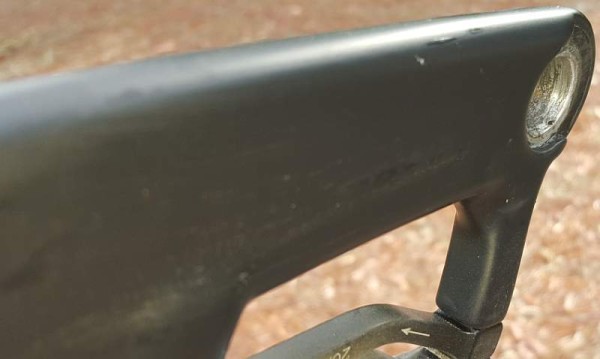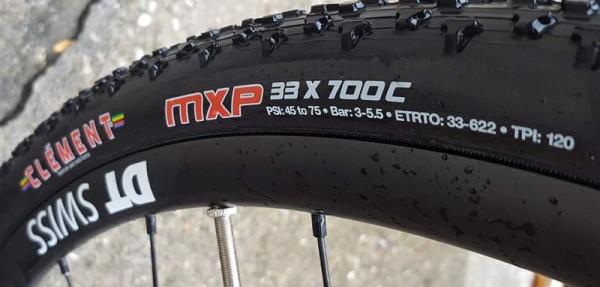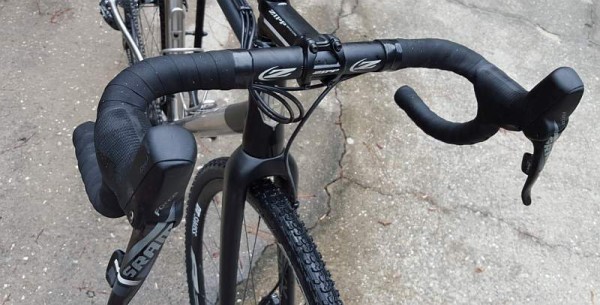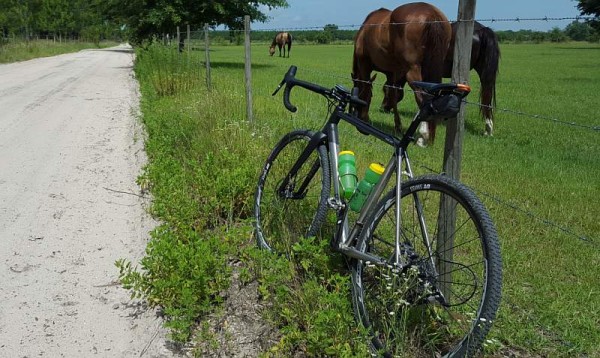With the ever expanding presence of cyclists taking to gravel roads, an equally expanding range of bicycles is complimenting this rapidly growing segment of the market. Manufacturers of all sizes are producing a gravel bike, with design features and sometimes frame materials, differing greatly.
Foundry Cycles of Bloomington, Minnesota, is a subsidiary of Quality Bicycle Products, the largest distributor of bicycle products in the United States. At Foundry, the mantra “Racing Matters”, means something real. Racing, coupled with research, testing and good design, boded well in our first impressions of the Foundry Overland. Since that time, we’ve put the Overland through the wringer.
The Overland differs from many of today’s bicycles, in that the frame is constructed from 3AL/2.5V Titanium, a departure from the trend of carbon. Titanium is enjoying a renaissance these days, and is the near perfect material for a true gravel bike. Rather than leaving the Overland naked, Foundry dressed it up with a semi-gloss paint treatment along the top side, perfectly complimenting the Whisky #9 CX thru axle fork. The paint is akin to fitting the bike with a nicely tailored suit – sharp.
There are no disappointments in the ride quality of the Overland. From its wheelbase, fork and compliant chainstays, the Overland laps up rough gravel roads and provides a comfortable, stable and predictable ride. It corners with confidence and is perfectly at home on a long, technical descent, or local group road ride with fast road tires; something I did on more than one occasion. The Overland garnered plenty of attention from fellow cyclists, visually it is a treat.
If you’ve wrenched on your own bike, you’re aware of the pitfalls of internal derailleur cable routing – gunked up cable liners that invariably cause shifting drag. The Overland features external cable routing, providing you’ve installed a mechanical drivetrain. External, fully-housed cables are a huge positive in my book, simply for the ease of maintenance. Electronic drivetrains are catered to, courtesy of the ports located at appropriate points along the frame.
The stock build of the Overland is kitted out with SRAM’s Force 22 hydraulic brake drivetrain, Zipp Service Course stem, handlebars and seatpost, DT Swiss R24 DB Spline wheels, Cane Creek headset and Clement MXP 700c x 33mm folding tires. Stock saddle by Velo. Bottle cages and pedals are not included.
Drivetrain performance was flawless, attributed to the professional assembly by the blokes at Foundry. The SRAM Force hydraulic brakes performed beyond my expectations. Excellent modulation and the best brake lever feel I’ve encountered to date with road / cyclocross hydraulic brakes. There is no vague, empty hyperspace feeling on the initial lever stroke -the time between squeezing the lever and brake pads engaging the rotor- the brakes feel akin to a well configured set of road caliper brakes, but with more power.
Thru axles front and rear provide secure attachment of the wheels to frame and fork, and help stiffen against braking forces.
The Whiskey #9 CX fork sports a recess at the bottom of the fork legs, to aid with alignment of the front wheel during installation. This is a very nice touch. Typically, swapping wheels on a thru axle fork can be an exercise in juggling.
The DT Swiss R24 DB Spline wheels roll nicely, but their low 24 spoke count front and rear, and proprietary straight pull bladed spokes, aren’t a good match for a gravel bike. I would prefer a higher spoke handbuilt wheelset, assembled from parts that are easily attainable from a local bike shop, should a breakage occur. With road tires fitted at 90psi front and rear, the DT R24 wheels were a little harsh for my liking. In their defense, they rode nicely on dirt and gravel roads, helped by the bigger tires and lower air pressure. On the positive, they remained perfectly true and hub engagement was rapid.
Clement’s MXP 700c x 33mm tire may be good for cyclocross, but they’re too narrow for gravel and sandy roads when the going gets deep. A pair of 40mm tires would be the ticket to gravel success. Despite this, the MXP’s are fast on most dirt, gravel and pavement surfaces, with excellent grip when cornering.
For the duration of the review period, Zipp’s Service Course handlebar, stem and seatpost were set and forget. No issues, no complaints. Bear in mind these parts may require substitution at your Foundry dealer for optimal fit. I opted for a longer stem and setback seatpost over the stock units supplied. Likewise, I swapped the stock Velo saddle for my preferred saddle, the Fizik Arione. Like many things in life, saddles are a personal choice, and the Velo didn’t agree with me.
Finally, and this is not an issue reflective of the Foundry Overland, but most gravel bikes in existence today. While the Overland’s 41mm of tire clearance is enough for most gravel cycling, it isn’t optimal for tricky UltraCross events such as Iron Cross, Savage Cross or Hilly Billy Roubaix, where wider tires are better. Wider tires provide a real measure of safety descending gnarly gravel roads, where fist sized gravel chunks are common. At minimum, I would like to see clearance for a 1.8″ tire on a bike like the Foundry. That is perfectly attainable without resorting to goofy angles, or chainstays requiring MTB cranksets to clear them.
These minor niggles aside, the Overland is a bike I do not want to return. Its sublime ride was appreciated during my recent recovery from a broken clavicle – as in I was riding way too early post injury – not recommended! Unfortunately, I cannot vouch for the Overland’s performance on a cyclocross race course, but I suspect it would perform favorably.
Priced at $US 4,695.00 for a complete bike with the above-referenced build, Foundry’s Overland is a fantastic do-it-all bicycle. Alternatively, you can build it yourself beginning with the frame and fork for $US 2,495.00.
Photos and article by Gravel Cyclist.
Jayson O’Mahoney is the Gravel Cyclist: A website about the Gravel Cycling Experience.
